Co-creation of content/activities
Co-creation in a gardens, libraries and museums context is the practice of involving people in the making of anything that those institutions can produce. This could be object interpretation, displays and exhibitions, educational resources, artworks, websites, tours, events or even festivals. (See SHARE Museums East introductory guide to co-creating community projects for additional information.)
There will be many more possibilities than are listed below and there is also scope for cross-collection public and community engagement with research (PCER) activities that span more than one Oxford University Gardens, Libraries and Museums (GLAM) institution.
It is recommended that researchers contact the relevant teams as soon as is feasible in order to ensure that the project is as successful as possible. Please be aware that GLAM venues have full and busy programmes and it may not be possible to pick up activities that have already been fully developed or to deal with urgent requests. Ideally, activities should be co-created with GLAM from project conception and researchers should get in contact early so that we can work together to develop your ideas. Please note that while researchers may contact GLAM departments directly they are also encouraged to contact departmental/Divisional PCER facilitators for interim support/guidance.

GLAM PCER Toolkit | Getting started |
| Opportunities by category | Opportunities by institution | Case studies |
(Please note that opportunities are subject to change)
- Co-creation enables the development of a reciprocal dialogue with a public audience and creates opportunities for deep research impacts
- The activities should bring value to the community that it involves and be properly designed to ensure benefit for all involved
- Co-creation can be a way of reaching underrepresented audiences
- Co-creation can be a way to work with particular target groups as relevant to the research topic
- New ideas and perspectives brought in through co-curation projects can inform and improve research methods
- Co-creation is usually more time and resource-intensive than other types of public engagement
- Lead time for recruitment, training and induction for volunteers needs to be considered
Costs will be very variable depending on the research / PCER objectives / community that the researcher is seeking to engage but may include the following:
- Staffing, e.g. Education Officer, technical services support – although may be given ‘in-kind’. See How much will the PCER activity cost? for further details
- Collaborator costs, e.g. speaker/performer fees, travel costs – although if these costs apply then the activity may be better categorised as a bespoke event
- Activity costs, e.g. craft/activity materials, additional printing
- Event costs, e.g. orientation signage, design of programme materials
- Press release & additional marketing support (if required – may be covered via regular GLAM channels)
- Evaluation costs, e.g. Evaluation Officer time, survey costs (tablet or paper surveys)
- Film & photography
- AV and other equipment hire beyond that provided by the GLAM institution and/or the researcher
- Catering costs for refreshments
Please contact the relevant team to discuss costs as soon as possible.
Examples (in alphabetical order by GLAM institution)
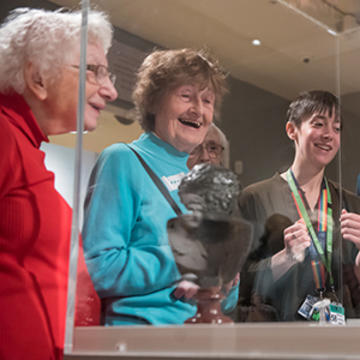
Community engagement/co-creation projects
Ashmolean Museum
The Ashmolean’s Learning team work with a variety of schools, adult and community/special interest groups on projects with a diverse range of audiences.
Researchers have in the past been involved with, for example, an outreach project in Oxford primary schools based around the Ashmolean Latin Inscriptions Project, an extensive programme of activities to engage local communities with the Watlington Hoard of Viking silver, and an ongoing project which collaborates with new groups each year to rework Museum labels.
Approx. costs: Costs can be variable so contact the relevant team
Example: Watlington Hoard
Further examples/information: Case studies and projects webpage
Ashmolean PCER projects are currently being updated. Examples and opportunities are subject to change.
Contact: PER Coordinator, Zoe Bampton (zoe.bampton@ashmus.ox.ac.uk)

Community engagement/co-collaboration projects
Bodleian Libraries
The Bodleian’s public engagement teams, researchers and curatorial staff work with diverse audiences and community and special interest groups to exchange knowledge and ideas and to explore the relevance of the collections and library spaces.
Researchers could potentially work with groups to produce outputs including exhibitions and displays, activity days, special events and workshops.
Approx. costs: Cost vary greatly depending on scope and duration of project. Please contact the team to discuss ideas
Example: Ethiopian & Eritrean Co-curation Project
Further examples/information: Special projects webpage
Contact: Public Engagement team (publicengagement@bodleian.ox.ac.uk)
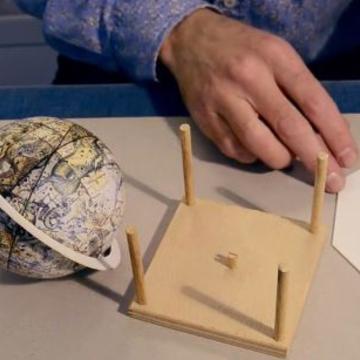
History of Science Museum
The History of Science Museum’s Young Producers programme offers young people between the ages of 18-30 who have an interest in history, science, museums or heritage interpretation a unique opportunity to go behind the scenes at the Museum and be involved in the co-curation of exhibits and events. The group meets once or twice a month.
Researchers are always welcome to get involved, which could be working with the group on exhibits, events or other activities.
Approx. costs: Cost vary greatly depending on scope and duration of project
Example: Redisplay of early scientific instruments from the Islamic world
Further examples/information: Young producers webpage
Contact: Learning team (learning@hsm.ox.ac.uk)

History of Science Museum / Pitt Rivers Museum
The History of Science and Pitt Rivers museum’s flagship programme, Multaka, brings the rich knowledge of people settling in Oxford – many through forced migration – and shares the diverse perspectives they bring to these collections with their museum colleagues and the wider community.
Researchers are always welcome to get involved, which could be working with the volunteers on co-curated exhibits/displays, co-produced online and in-person events, tours and object handling sessions.
Further information: MultakaOxford webpage
Contact: Multaka Project Manager (nicola.bird@museums.ox.ac.uk);
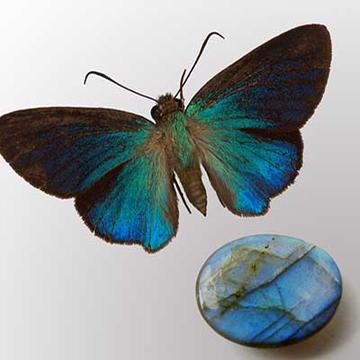
Oxford University Museum of Natural History
The content of a variety of flexible displays in the Museum of Natural History is changed on a regular basis. Single-case displays are often used to share and showcase the results of projects and partnerships that are running at the museum. Timescales are variable.
Researcher involvement in existing projects is usually coordinated via departments and the museum has a formal submissions process for proposals - please contact the team for more information.
Approx. costs: Temporary displays are usually linked to larger projects within the museum. Costs will be considered within wider project budgets if applicable
Examples/information: Past displays webpage
Contact: Exhibitions team (ellena.grillo@oum.ox.ac.uk)
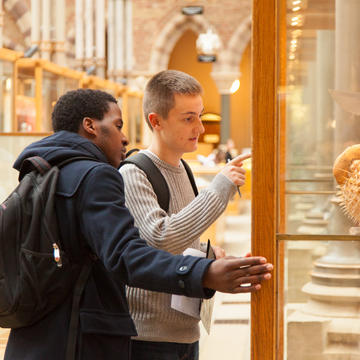
Oxford University Museum of Natural History
The Museum of Natural History has an extensive youth programme for young people between the ages of 14-19. Sessions may be for young people interested in research or for those who want to get more involved with activities in the museum, while some are simply social spaces for young people interested in science and nature.
Researchers wanting to work with young people are always welcome to get involved. It can be a great place for consulting and piloting – researchers should just bring themselves and their research.
Example: Youth Forum
Further examples/information: Young people webpage
Contact: Education team (education@oum.ox.ac.uk)
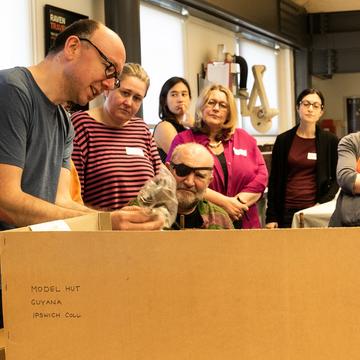
Community Engagement Outreach programmes/partnerships
Pitt Rivers Museum
Fundamental to the Pitt Rivers Museum’s strategy is socially engaged practice. Community partnerships are central to the participatory approach of the Museum, with a focus on fostering opportunities for researchers and the wider community to co-create responses to the collections and to cutting-edge research.
Researchers have in the past run experimental workshops using objects from the collections alongside contemporary objects as catalysts to discuss ideas with particular groups.
Approx. costs: Costs will be very variable
Example: Messy Realities: The Secret Life of Technology
Further examples/information: Community partnerships webpage
Contact the museum for more information (prm@prm.ox.ac.uk)
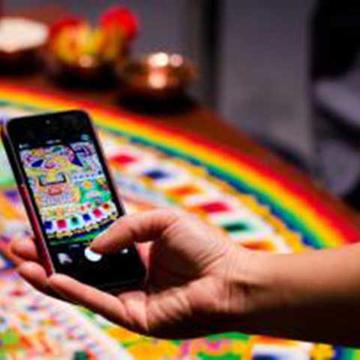
Digital engagement with communities
Pitt Rivers Museum
Databases of objects and collections can be digitally curated in collaboration with particular communities. For example, researchers have in recent times collaborated with communities to build websites that will help them to locate ancestral items in European museum collections.
Researchers could potentially work with groups on online/digital engagement projects and so support productive dialogue regarding cultural items in GLAM’s collections.
(Also see (Re)-interpretation of collections and Online engagement in the GLAM PCER Toolkit.)
Approx. costs: Costs can be variable so contact the relevant team to discuss
Example: Recirculating sound recordings in NE India
Further examples/information: Featured research partnerships webpage
Contact the museum for more information (prm@prm.ox.ac.uk)

Pitt Rivers Museum
Interventions at the Museum could include placing new objects / new labels in cases, pop-up short-term photo interventions into permanent displays, or recording and sharing historically underrepresented stories through new and existing collections.
Researchers could potentially work with groups on particular projects to add interventions into cases.
(Also see (Re)-interpretation of collections in the GLAM PCER Toolkit.)
Approx. costs: Costs can be variable so contact the relevant team to discuss
Example: Labelling Matters
Further examples/information: Research projects webpage
Contact the museum for more information (prm@prm.ox.ac.uk)
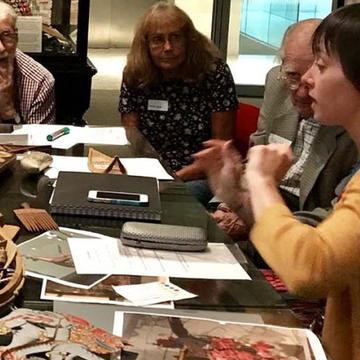
GLAM-wide
Meet Me at the Museum is a social group for older people and adults living with dementia and their carers. It enables behind-the-scenes access to all four GLAM museums and collections. The group co-design their own programme in consultation with GLAM’s Community Engagement team.
Researchers could potentially run sessions for the group, which could be behind-the-scenes tours, demonstrations, object handling, tours of exhibitions, talks about the provenance of collection/object history, arts and crafts workshops, or another activity entirely. Get in touch to discuss possibilities.
Further information: Meet Me at the Museum webpage
Contact: GLAM Community Engagement team (outreach@museums.ox.ac.uk)




